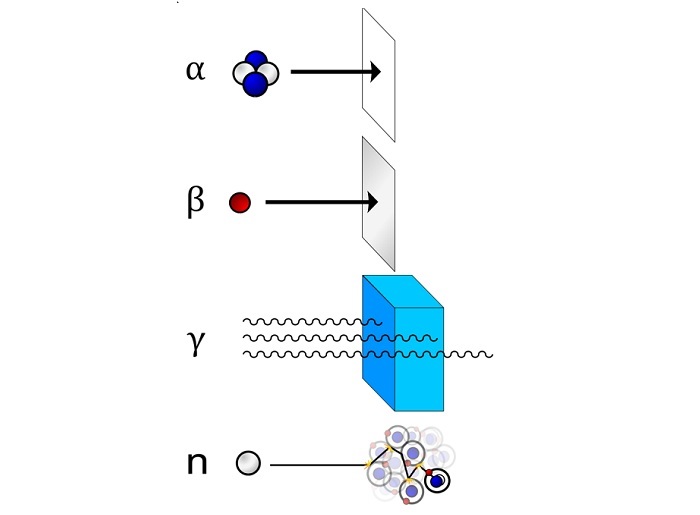Radiation is a double-edged sword. On the one hand, it has proved indispensable in various fields such as medicine, industry, and energy production. However, exposure to certain types of radiation can be hazardous and potentially life-threatening. With the increasing use of radiation in various applications, the need for effective radiation-shielding materials has become paramount. These materials play a crucial role in protecting humans, equipment, and the environment from harmful radiation. In this article, we will explore some of the most effective materials for radiation shielding and their applications.

Table of Contents
Understanding Radiation Types
Before delving into the shielding materials, it’s essential to have a basic understanding of the different types of radiation:
1. Alpha Particles: Consisting of two protons and two neutrons, alpha particles are relatively large and heavy. They can be stopped by a sheet of paper or even the outer layer of our skin.
2. Beta Particles: Beta particles are high-energy electrons or positrons emitted from a radioactive nucleus. They can penetrate deeper into materials than alpha particles but can be effectively shielded by materials like plastic or glass.
3. Gamma Rays: Gamma rays are high-energy electromagnetic waves emitted by radioactive nuclei. They are highly penetrating and require denser materials for effective shielding.
4. Neutrons: Neutrons are uncharged subatomic particles emitted during nuclear reactions. They can penetrate deep into matter and require specialized shielding materials.
Traditional Shielding Materials
Over the years, several traditional materials have been employed for radiation shielding purposes. These materials are still widely used due to their availability and cost-effectiveness:
1. Lead
Lead is perhaps the most recognizable radiation shielding material. It is commonly used in medical facilities, research laboratories, and industrial settings. Lead is particularly effective against gamma rays and x-rays due to its high atomic number, which results in significant attenuation of these high-energy photons. However, lead is relatively heavy and can pose logistical challenges in certain applications.
2. Concrete
Concrete is another widely used radiation shielding material. Its effectiveness is primarily attributed to its composition, which includes a mix of cement, water, and aggregates. The high-density nature of concrete allows it to absorb and attenuate gamma rays effectively. Additionally, it is a cost-effective solution for nuclear power plants and other large-scale shielding needs.
3. Water
Water is a simple yet effective shielding material for many types of radiation. It is often used as a shielding material in nuclear reactors, both for neutron moderation and gamma-ray attenuation. Water’s effectiveness is primarily due to its high hydrogen content, which helps in slowing down and absorbing neutrons.
Advanced Radiation Shielding Materials
While traditional materials remain prevalent, ongoing research and technological advancements have led to the development of more advanced radiation shielding materials. These materials offer improved effectiveness and present additional advantages:
1. Boron-Containing Materials
Boron is an excellent absorber of thermal neutrons. Boron-containing materials, such as boron carbide and borated polyethylene, are used to shield against neutron radiation. These materials are often employed in nuclear power plants and research facilities. They are particularly valuable in preventing neutron activation of nearby equipment.
2. Polymer-Based Shields
Polymers have gained attention in recent years as an alternative to traditional shielding materials. High-density polymers, such as high-density polyethylene (HDPE) and polypropylene, can effectively shield against gamma rays and some types of neutron radiation. Their advantage lies in their lightweight and versatile nature, making them suitable for portable shielding applications.
3. Hybrid Shields
Hybrid shielding materials combine different elements or compounds to create a more efficient barrier against radiation. For example, incorporating tungsten or depleted uranium in high-density polyethylene can enhance gamma-ray shielding. Such hybrid shields provide a better balance between effectiveness and weight, which is often crucial in aerospace applications.
4. Nanostructured Materials
Nanotechnology has opened up new possibilities in various fields, including radiation shielding. Nanostructured materials, like nanoparticles and nanocomposites, exhibit unique properties that can be tailored for specific radiation types. Researchers are exploring the use of carbon nanotubes and graphene-based materials for efficient shielding due to their exceptional mechanical and electrical properties.
5. Liquid Metal Alloys
Liquid metal alloys, such as gallium-based alloys, are being investigated for their potential in neutron shielding. Their low melting points allow them to be molded into various shapes and configurations, adapting to complex geometries and enhancing shielding performance.
Summary
Radiation shielding is of paramount importance to safeguard human health, the environment, and critical equipment from the harmful effects of radiation exposure. While traditional materials like lead, concrete, and water continue to be widely used, ongoing research and technological advancements have led to the development of more effective and innovative radiation-shielding materials.
From boron-containing materials for neutron attenuation to lightweight polymer-based shields and nanostructured materials with tailored properties, the choices for radiation shielding have expanded significantly. These advancements will undoubtedly contribute to enhancing safety standards in various fields, including nuclear power, medicine, and space exploration, where radiation protection is essential. As technology continues to progress, we can expect even more sophisticated and efficient radiation shielding materials to emerge, further improving radiation safety across multiple domains.
Working With A-fabco, Inc.
If you’re looking for top-quality products and expertise in radiation shielding, look no further than A-fabco, Inc. As a leading provider of radiation shielding solutions, we offer a comprehensive range of products and services designed to protect you, your equipment, and the environment from harmful radiation. Don’t compromise when it comes to radiation protection. Contact us today and experience the difference our expertise and cutting-edge solutions can make in safeguarding against harmful radiation exposure!



